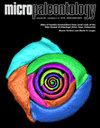Biostratigraphy and sedimentation rate estimation of Quaternary sediments of the Krishna-Godavari Basin, Bay of Bengal: Evidence from NGHP-01 Holes 10D, 5C and 3B
IF 1.3
4区 地球科学
Q3 PALEONTOLOGY
引用次数: 0
Abstract
The deposition of a substantial amount of clastic sediments in the Krishna Godavari Basin formed a thick layer of nannofossil-rich clay known as the Godavari Clay Formation. This clayey sequence is a treasure trove for unveiling paleoclimatic and paleoceanographic information. Numerous radiometric dates from the topmost portion of this clay (top 27m) are available, covering the last 43 ka. However, the availability of data on age connotation with considerably high resolution for the deeper sediments is rare and is still awaited. In this study, we pursued nannoplankton and planktic foraminiferal investigations on the top 198 m (Hole 10D), 300 m (Hole 3B), and 198 m (Hole 5C) sediments of this basin to generate multiple age data with a relatively high resolution. First Occurrence (FO) and Last Occurrence (LO) of nannoplankton taxa Emiliania huxleyi, Helicosphaera inversa, Helicosphaera sellii, large Gephyrocapsa spp., Pseudoemiliania lacunosa, Reticulofenestra asanoi, and planktic foraminiferal taxa Globorotalia flexuosa and Globigerinella calida are considered as potential index taxa for establishing the bioevents as well as biostratigraphy.Based on these, we have identified nine events from Hole 10D, six events from Hole 3B, and seven events from Hole 5C, which are potential for assigning the relative ages.We also observed two-fold variations in sedimentation rates in all the holes and one hiatus at 110.73 mbsf in Hole 5C, indicating a shift in climate and basinal settings. A high sedimentation rate of greater than 20.59 cm/ka after approximately 0.4 Ma at all the holes is probably linked to the intensification of the Indian summer monsoon across the mid-Brunhes Epoch. The significantly low sedimentation rates (less than 14.62 cm/ka) in older sediment sequences before 0.4Ma is probably related to the relatively weak monsoonal activity. The generated age data, variations in sedimentation rates, and identified hiatus are considered to be potential for delineating paleoclimatic and paleoceanographic changes of this area since the Calabrian Stage.孟加拉湾克里希纳-戈达瓦里盆地第四纪沉积物的生物地层学和沉积速率估算:来自 NGHP-01 10D、5C 和 3B 号钻孔的证据
克里希纳戈达瓦里盆地大量碎屑沉积物的沉积形成了一层厚厚的富含化石的粘土,被称为戈达瓦里粘土层。该粘土层是揭示古气候和古海洋学信息的宝库。从该粘土的最上层部分(顶部 27 米)可获得大量辐射测定日期,涵盖过去 43 ka 年。然而,深层沉积物中分辨率相当高的年龄内涵数据却非常罕见,我们仍在等待这些数据。在本研究中,我们对该盆地顶部 198 米(10D 号孔)、300 米(3B 号孔)和 198 米(5C 号孔)沉积物进行了浮游动物和浮游有孔虫调查,以获得分辨率相对较高的多个年龄数据。在该盆地沉积物中,Emiliania huxleyi、Helicosphaera inversa、Helicosphaera sellii、大型 Gephyrocapsa spp、我们认为,Pseudoemiliania lacunosa、Reticulofenestra asanoi 以及浮游有孔虫类群 Globorotalia flexuosa 和 Globigerinella calida 是确定生物事件和生物地层的潜在指标类群。在此基础上,我们确定了 10D 号钻孔的 9 个事件、3B 号钻孔的 6 个事件和 5C 号钻孔的 7 个事件,可用于确定相对年龄。我们还观察到所有钻孔的沉积速率都有两倍的变化,5C 号钻孔在 110.73 mbsf 处出现了一个间断,表明气候和基底环境发生了变化。在大约 0.4 Ma 之后,所有钻孔的沉积速率都大于 20.59 cm/ka,这可能与整个布伦斯纪中期印度夏季季风的加强有关。0.4Ma 以前较老沉积序列的沉积速率明显偏低(小于 14.62 cm/ka),这可能与季风活动相对较弱有关。所生成的年龄数据、沉积速率的变化以及所确定的间断期被认为是划分卡拉布里亚阶段以来该地区古气候和古海洋学变化的潜在依据。
本文章由计算机程序翻译,如有差异,请以英文原文为准。
求助全文
约1分钟内获得全文
求助全文
来源期刊

Micropaleontology
地学-古生物学
CiteScore
3.20
自引率
6.70%
发文量
18
审稿时长
>12 weeks
期刊介绍:
The Journal of Micropalaeontology (JM) is an established international journal covering all aspects of microfossils and their application to both applied studies and basic research. In particular we welcome submissions relating to microfossils and their application to palaeoceanography, palaeoclimatology, palaeobiology, evolution, taxonomy, environmental change and molecular phylogeny. Owned by The Micropalaeontological Society, the scope of the journal is broad, demonstrating the application of microfossils to solving broad geoscience issues.
 求助内容:
求助内容: 应助结果提醒方式:
应助结果提醒方式:


